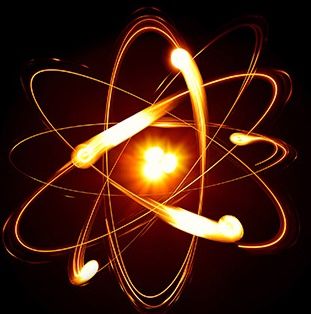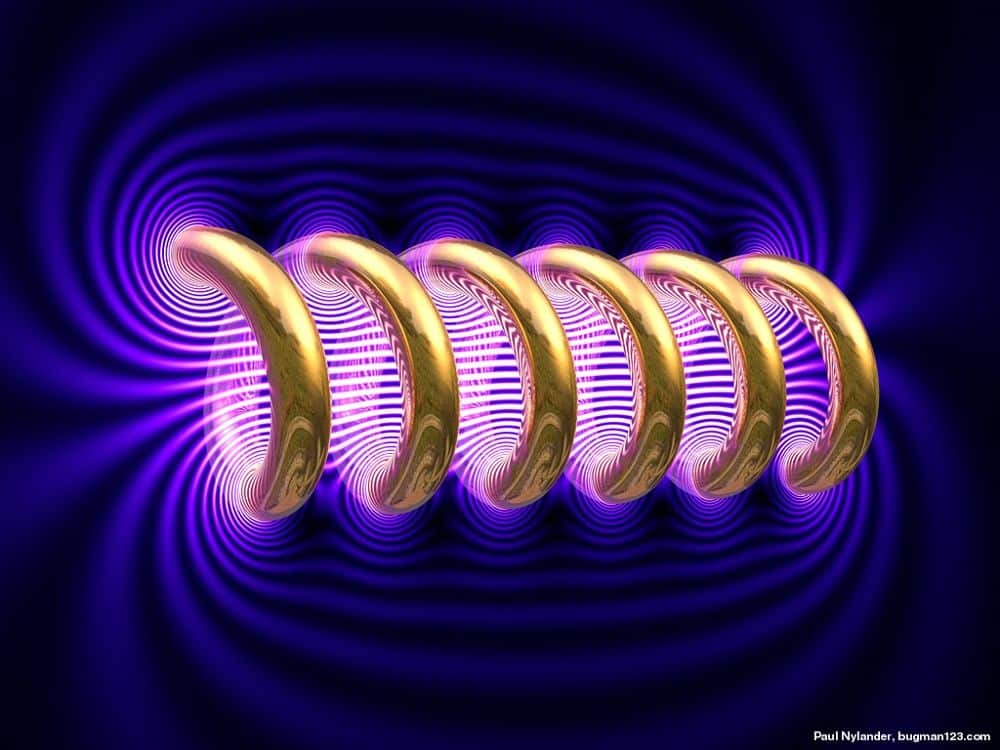
Here at AstroCamp, one of our most popular classes is Electricity and Magnetism. We all know know what magnets are. At the very least, you’ve probably put one on the fridge. Magnets can come in all shapes and sizes, but they all work the same way. In simple terms, they have a north pole and a south pole. When two identical poles get close, they repel, and–of course–opposites attract. That said, many things about magnets are a lot more mysterious. Scientists explain these phenomena through something called a magnetic field, and this has some pretty wild and testable consequences. One of them is known as Faraday’s Law, which says that a changing magnetic field can generate electricity through a process known as electromagnetic induction. There isn’t a lot to be said about how this works; just as gravity pulls you down, moving magnets near wire will make electricity! This is just a metal rod wrapped with a bunch of wire. Without any electricity going through the wire, it doesn’t do anything special. Now, let’s press the button and let electricity flow through the coil!
This is just a metal rod wrapped with a bunch of wire. Without any electricity going through the wire, it doesn’t do anything special. Now, let’s press the button and let electricity flow through the coil!
 What is going on? Well, to explain that we have to back up a bit. Let’s start by answering this question:
What is going on? Well, to explain that we have to back up a bit. Let’s start by answering this question:
What is electricity?
It is the thing that runs our light bulbs, smart phones, computers, and air conditioning but what is it on a more fundamental level? What is happening?
 As you probably know, everything you have ever touched is made out of atoms, and these atoms have three parts: the positively charged proton, the negatively charged electron, and the neutral neutron. These charges determine how the particles interact; particles with identical charges push away while those with opposites attract.
As you probably know, everything you have ever touched is made out of atoms, and these atoms have three parts: the positively charged proton, the negatively charged electron, and the neutral neutron. These charges determine how the particles interact; particles with identical charges push away while those with opposites attract.
Electricity, as you may have figured out by looking at the word, has to do with electrons. Electricity basically means moving electrons. However, physics has a bit of a surprise for us here. Whenever a charge is moving, it makes a magnetic field–if this word seems confusing, this is just what is produced by a magnet to push and pull on other magnets–around it in a circle. This happens every single time. You might be tempted to ask why, but I don’t have a great answer for you. This is just how nature is.
All we have done to make an electromagnet is sort of durn this trick on its head. By wrapping the wire into a coil, the circular magnetic field created every time an electron moves adds up in the middle. This kind of design is called a solenoid.
 This awesome illustration shows how the circular magnetic fields around each wire add up in a solenoid to make a strong magnetic field inside. All credit goes to Paul Nylander.
This awesome illustration shows how the circular magnetic fields around each wire add up in a solenoid to make a strong magnetic field inside. All credit goes to Paul Nylander.
Everyday Electromagnets
This might seem like a simple lab trick to convince you about the mysterious but very real connection between electricity and magnetism, but it turns out to be an incredibly useful and important design. Outside the obvious purpose of picking things up like the giant electromagnets at junkyards, electromagnets are used in speakers, hard drives, MRI machines, motors, generators, and many other things you might not expect!
CERN Large Hadron Collider
This is a view inside the Large Hadron Collider at CERN, the most powerful particle accelerator on the planet! This shoots tiny particles at very near the speed of light along a very precise track. While you might expect it to be the metal walls that keep the particles inside, the tiny particles would actually fly right out through the walls! So how do they keep those pesky particles in line? They steer them using incredible powerful superconducting electromagnets!
Solar Farms and Energy Sources
Think for a moment about how much electricity we use. Then consider where that electricity comes from. Coal, wind, and nuclear power probably come to mind–but then how do we get the electricity out of those things? The answer is actually simple: magnets! Each of the major methods of making electricity really are just finding ways to spin a turbine which is connected to a magnet! The amount of power that you get out of one of these generators depends on how many times the wire is wrapped around, how close it is to the magnet, and how strong the magnet is. This in turn makes the magnet harder to turn. If you look at a windmill, you will notice it has huge blades, allowing it to convert more wind into more power! This wind farm in Palm Springs not too far from the AstroCamp campus employs this exact technology to generate electricity from the wind!

